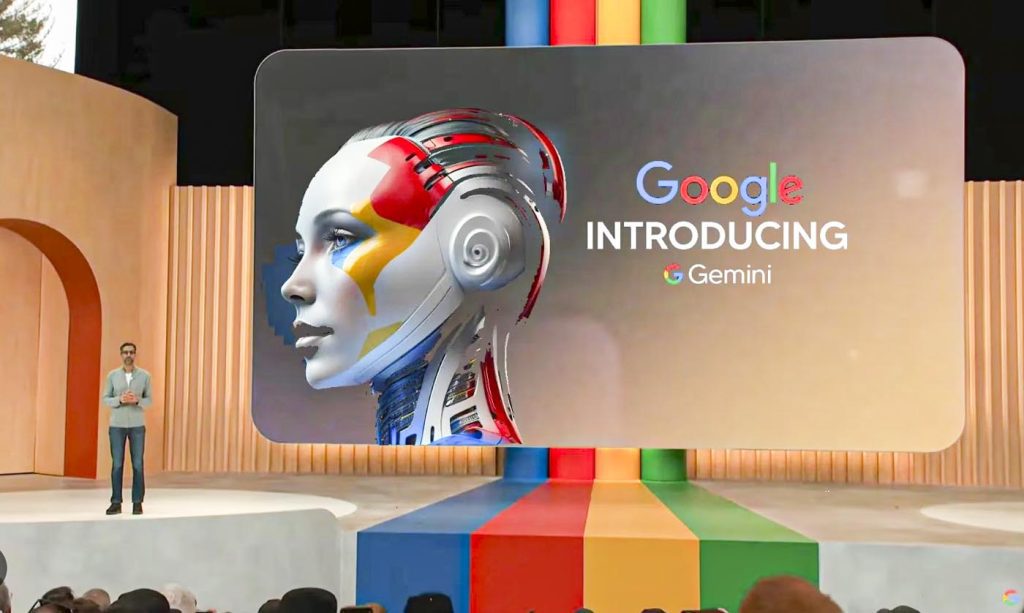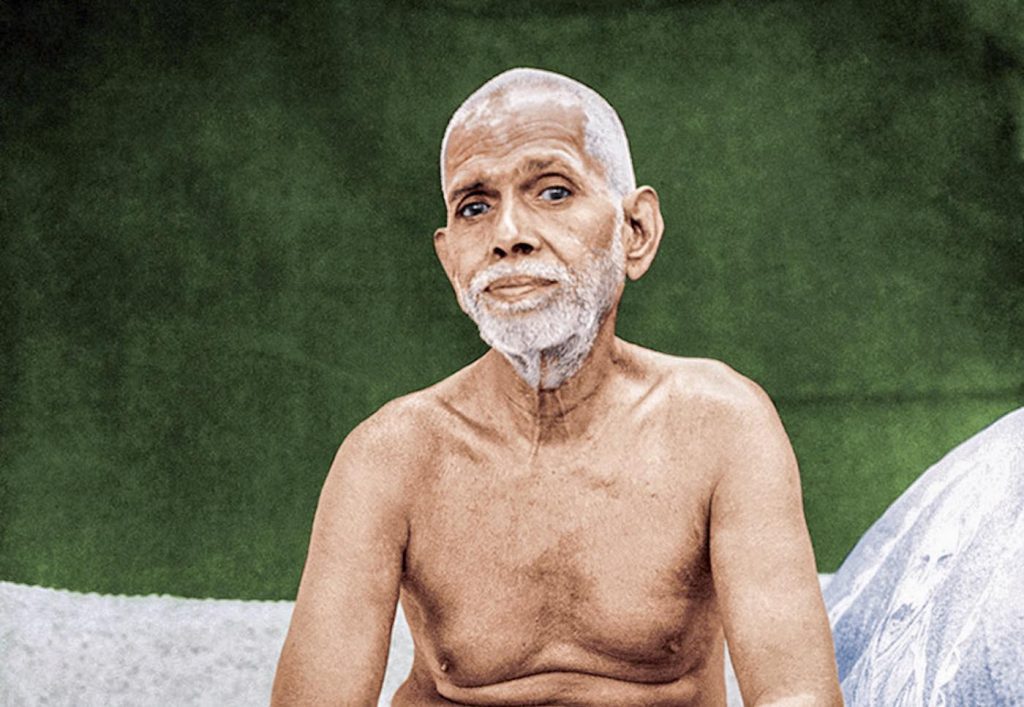Adopting artificial intelligence to enhance the productivity, cultural engagement and the spiritual outreach of Hindu dharmic institutions
By Aditya Muthaiah, Oregon
The latest big technology in the world today is AI. Ever wondered how it can be fruitfully used by Hindu dharmic institutions? We look into whether and how such institutions are currently using AI-powered tools, such as OpenAI’s GPT-4, Dalle-E, Midjourney, Google Gemini, etc. We also examine how they plan to use Artificial Intelligence in the future, and include recommendations on how AI technologies might be implemented to enhance work efficiency. AI harnesses complex algorithms and vast data sets to enable machines to perform tasks that typically require human intelligence. These systems continuously improve and adapt by learning from their experiences, much like we do.

AI currently helps many organizations by automating tasks, analyzing data for insights, making predictions, and so much more. It can improve customer service with AI-powered chatbots, and enhance cybersecurity by detecting online threats. As technology advances, AI enables organizations to stay competitive by improving worker productivity and efficiency in the workplace. Major tech companies, along the lines of Google, Microsoft and OpenAI, Meta and Amazon, are not only leading the development of AI but also using it in many areas. A few use cases include helping programmers write code, helping creators with their digital creations, such as audio/video/digital art, personalized advertising, creating virtual worlds or interactive spaces, and AI virtual assistants (e.g., Microsoft Office Copilot).
Use Cases
Hindu dharmic organizations currently use Artificial Intelligence in many simple ways. This is mainly because Generative AI sometimes produces results with numerous biases and made-up information (hallucinations). Some Hindu institutions have fully steered clear of AI for the time being. One example is Bochasanwasi Shri Akshar Purushottam Swaminarayan Sanstha, commonly known as BAPS. “We have not used AI in any form at BAPS due to the reason that our organization’s high-reliability bar is not yet being met by these AI technologies. Hopefully, we will utilize AI in the future, but that time is not now. We use components of technology when and if it makes sense, but there has to be certain attributes in the technology before we deploy it from an organizational perspective,” says Biren Gandhi of BAPS.
At Chinmaya Vishwa Vidyapeeth, Chinmaya Mission’s University in Kerala, coordinators have the same thought. Bramacharini Taarini Chaitanya explained, “A lot of work will have to be done between AI and subject experts before the generation of authentic data. CVV has included a subject [a university-level course] on AI and its implementation, but this is only its first year, and there’s not much to say as of now.”
However, this is not true at every dharmic institution. At Central Chinmaya Mission Trust headquartered in Mumbai with worldwide operations, the social media wing is actively using AI in small ways. “We are using AI to refine our content using ChatGPT. We use embedded AI in certain tools, like Canva, and sometimes we are using certain apps and tools for AI voice-generation for our videos. And we occasionally are generating images for our social media posts,” says Ms. Anupama Bathala of CCMT. Anu-ji also spoke about how AI is only being used in social media at CCMT and it is not yet found to be reliable in other use cases: “Everything we are doing so far [with AI] is only from a social media perspective. In actual publications, we have not started using AI much at all.”
At the Hinduism Today offices at Kauai’s Hindu Monastery, they have started using AI for a broad range of use cases: from creating Hindu games, writing code and cloning the voice of the founder, to other linguistics uses, creating art, generating music and general research. Sannyasin Tillainathaswami gave an example about how they created a small jumbled word game as a demonstration, with words relating to Hinduism and yoga; “this game was created by OpenAi’s GPT-4 by using just a few prompts. They have also used ChatGPT for coding small plug-ins, and it proved useful in rebuilding one of their mobile apps. Although ChatGPT does not always give out the code perfectly, it does most of the work, which you can go through and refine, saving much time compared to if you had to code the whole project manually.”

The monks have also cloned Satguru Sivaya Subramuniyaswami’s voice (founder of Hinduism Today) to complete audio recordings of him reading his major books. According to Tillainathaswami, “One member of our team is working to create this cloned audio voice. Gurudeva had read and audio-recorded a lot of chapters of his books but he didn’t finish them all. With this large body of stable audio, we were able to clone his voice in a way that sounds, for the most part, imperceptibly realistic.”
Paramacharya Sadasivanathaswami of Kauai Hindu’s Monastery discussed how he uses AI with Hinduism Today to simplify workloads. He spoke about ChatGPT on the linguistics side of things: “We are using ChatGPT primarily for language, for example, I use it for proofreading. In the past, when proofreading articles for the magazine or our book, I would sit down with the page and spend five minutes trying to spot spelling errors and grammatical mistakes, and now I can have ChatGPT do that fairly accurately in two seconds. Its work still has to be double-checked by a human, but it saves time.
“We also have ChatGPT translate Tamil and Sanskrit terms and verses for us. We will drop Tamil couplets in ChatGPT and a few moments later we will have a fairly accurate English translation. We can also ask it to drill deeper into the word. For example, you could tell it give the entomology and the five top uses for a particular Sanskrit word. ChatGPT can also execute small tasks, like alphabetizing lists or comparing PDFs.”
Paramacharya spoke about how he uses AI for art: “We have done a few things with Dall-E (an AI-powered image generator accessible through ChatGPT’s interface) such as making comics for the magazine. First, I will create an idea for the comic, then I insert that as a carefully worded “prompt” into Dall-E. In a few seconds I have the artwork. After evaluating the the result, I may ask for a re-rendering three or four times, editing as I go. This is much more efficient than my normal workflow. Historically, I formulate the idea, make a sketch and send that to an artist with a set of detailed instructions, along with example photos of various elements of the piece. After a few weeks the artist sends a completed sketch, incorporating his ideas. I edit that and send it back with corrections and more instructions. Finally, the artist sends a final color version along with a bill. With the AI approach, all of that three weeks of back and forth and money is compressed into maybe three minutes for the artwork that Dall-E gives me. Additionally, as I keep tweaking Dall-E’s work properly and understanding how it thinks better, the results get better and better and better.”
At Hinduism Today the monks also use AI for research. For instance, Paramacharya says: “In the 1980s, to find out the major similarities and differences of the six south Indian Saiva Siddhanta sects, we would have had to get on an airplane, fly to Honolulu, which is 102 miles away, rent a car and drive to the University of Hawaii at Manoa, go to the library and spend maybe six hours going up and down in the library, check into the hotel, spend the night, and fly back the next day to Kauai. Now this two-day, $500 journey to find out the answer to that question can be asked and answered using ChatGPT quite easily in just a minute, virtually free of cost. Yes, going to a search engine is a good option, but hunting down and assembling the information you’re looking for is still a large project. With AI, the answer needs tweaking and de-hallucinating, but it’s pretty solid. It is quite astonishing how much this tool helps us.”
AI is being used at Ramanasramam in India in chatbots, search engines, and tracking bookstore sales. Here is what they said about their chatbot. “ ‘Chat with Sri Ramana Maharshi’ is an immersive AI-powered chat application that invokes the wisdom of Bhagavan Sri Ramana Maharshi. This unique tool has been meticulously crafted and deep-trained on the abundant, timeless teachings of Sri Ramana, making it adept at answering your spiritual inquiries precisely in the light of Sri Ramana Maharshi’s teachings based on the book Talks with Sri Ramana Maharshi.”

The Ramana search engine, a search engine that searches all books and magazines and displays results based on the keywords of the search, is also powered by AI. Here is what they said about relating to their search engine, “Our Ramana search engine is also AI-based. AI has revolutionized the landscape of search engines, transforming the way users discover and access information. Through sophisticated algorithms and machine learning capabilities, AI has significantly improved the efficiency, relevance, and personalization of search results. A key aspect of AI in search is its ability to understand user intent. Advanced natural language processing algorithms enable search engines to decipher the context and nuances of user queries, delivering more accurate and contextually relevant results. This helps users find information more quickly and efficiently, enhancing the overall search experience.”
At the Ramanasramam bookstore, they are using AI to suggest products by analyzing previous sales patterns to streamline the process of gathering, evaluating and utilizing data. Giridhar-ji of Ramanasramam explained. “Self-learning algorithms can optimize inventory management, predict sales trends, enhance customer interactions, and automate logistics, ultimately delivering an enhanced customer experience. Our utilization of NLP enhances chatbots, enabling them to proficiently address frequently asked questions and product inquiries. This ensures that customers receive prompt and accurate responses, even beyond regular business hours.
Other Ways to Leverage AI
Content creation and curation, translation, generating ideas, research, summarization and voice generation are some of the well-known and most used today, there are many more ways to use it. For example, you could use it to schedule and post social media content, or you could develop immersive virtual reality or augmented reality experiences.
AI tools such as Buffer, Flick, Content Studio and Oco can help you with anything social media-related. They can create content for social media posts, automatically schedule and post the content, and analyze the content after it is posted. These tools make managing a social media page much simpler and less time-consuming.
With tools such as Tabnine, CodePal, GitHub Copilot and even ChatGPT, you can get the code for a possible VR or AR experience. Though the generated results won’t be perfect, they will have done 80% of the work, and all you will have to do is skim through the code and fix any errors you find. Even this part can be done with AI by using tools such as Visual Studio Code and AIXcoder. To bring the 3D rendered objects into the VR and AR experiences, we can use tools like Unity ML Agents, Houdini Engine and TensorFlow.
Experiences that Hindu Dharmic institutions could implement in a Virtual Reality or Augmented Reality landscape could include: tours of temples or ashrams with educational walkthroughs, an interactive walkthrough of ancient Hindu tales, such as the Ramayana or Mahabharata, and even use it as a way to celebrate and recreate cultural festivals with elements such as interactive storytelling to teach the origins of festivals and why we celebrate them.
Conclusion
It is clear that dharmic institutions are off to a great start in using AI to improve productivity and efficiency. They are on a fast and interesting journey towards finding a way to use technology to promote the Hindu way of life. Just like these organizations, this author is also eagerly waiting to see what more the AI world has in store.

Aditya Muthaiah, 15, is a high school freshman from Portland, Oregon, US. He enjoys writing, playing the trumpet, traveling and spending time with his friends. Email contact: muthaiahaditya@gmail.com
